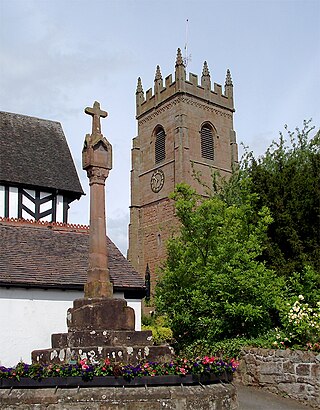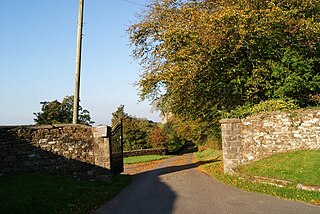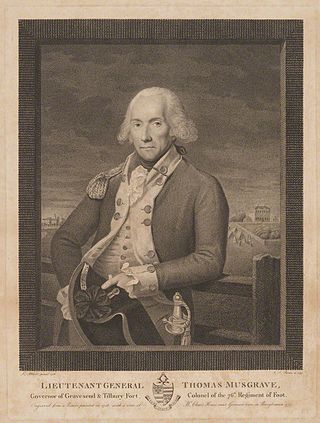
Aspatria is a town and civil parish in Cumberland, Cumbria, England. The town rests on the north side of the Ellen Valley, overlooking a panoramic view of the countryside, with Skiddaw to the South and the Solway Firth to the North. Its developments are aligned approximately east–west along the A596 Carlisle to Workington road and these extend to approximately 2 miles (3.2 km) in length. It lies about 8 miles (13 km) northeast of Maryport, a similar distance to the Southwest of Wigton, about 9 miles (14 km) north of Cockermouth and 5 miles (8.0 km) from the coast and Allonby. It comprises the townships of Aspatria and Brayton, Hayton and Mealo, and Oughterside and Allerby, the united area being 8,345 acres (3,377 ha); while the town takes up an area of 1,600 acres (647 ha). In earlier days a Roman road leading from "Old Carlisle" to Ellenborough passed through the hamlet.

The Gosforth Cross is a large stone monument in St Mary's churchyard at Gosforth in the English county of Cumbria, dating to the first half of the 10th century AD. Formerly part of the kingdom of Northumbria, the area was settled by Scandinavians some time in either the 9th or 10th century. It has gained reputation for its combination of Christian symbols with Nordic symbols, being a tangible piece of evidence of the impact of the Christianization of Scandinavia.

Bromfield is a village and civil parish in Cumbria, in the north of England.

Dalston is a large village and civil parish in Cumbria, England, on the B5299 road 4 miles (6 km) south-west of Carlisle.

St Bees Priory is the parish church of St Bees, Cumbria, in England. There is evidence for a pre-Norman religious site, on which a Benedictine priory was founded by the first Norman Lord of Egremont William Meschin. It was dedicated by Archbishop Thurstan of York, sometime between 1120 and 1135.

St Bridget's Church is in the village of Brigham, Cumbria, England. It is an active Anglican parish church in the deanery of Solway, the archdeaconry of West Cumberland, and the diocese of Carlisle. The church is recorded in the National Heritage List for England as a designated Grade I listed building.

St Mungo's Church is in the village of Bromfield, Cumbria, England. It is an active Anglican parish church in the deanery of Solway, the archdeaconry of West Cumberland and the diocese of Carlisle. The church is recorded in the National Heritage List for England as a designated Grade I listed building.

St Kentigern's Church,, is in the village of Caldbeck, Cumbria, England. It is an active Anglican parish church in the deanery of Carlisle, the archdeaconry of Carlisle and the diocese of Carlisle. The church is recorded in the National Heritage List for England as a designated Grade I listed building. It is dedicated to Saint Kentigern, whose alternative name is Saint Mungo; hence the church's alternative title of Caldbeck, St Mungo.

Crosthwaite Parish Church is a church at Great Crosthwaite on the outskirts of Keswick in Cumbria, England. It is dedicated to St Kentigern and is the Anglican church of the parish of Crosthwaite. Since 1951 it has been a Grade II* listed building. The church has an evangelical tradition.

Westnewton is a small village and civil parish in Cumberland, Cumbria, England. The 2011 census had a population of 265. The village of Westnewton is situated to the north-west of the Lake District, on the relatively flat plain halfway between the Lake District hills and the Solway Firth. It is a small village located two miles north of Aspatria, on the B5301 Aspatria and Silloth road. The small hamlet of New Cowper is located one-and-a-half miles to the north-west. The landscape generally in this area is one of gently undulating fields, relatively devoid of features other than the thorn field-hedges, with shallow valleys carrying small streams, such as the Black Dub beck. Westnewton has a school called St Matthew's Church of England School, a church called St Matthew's Church, and a cemetery. There used to be a public house called the Swan Inn but this has closed.

The Rev. William Slater Calverley (1847–1898) was an unassuming rural English vicar who through diligent study and painstaking scrutiny became an extraordinary amateur antiquarian. Although born in Leicestershire, Calverley claimed his fame through interpreting the carved sculptured relics that he and others found in Cumberland churchyards. He made intricate drawings, corresponded with academic authorities, and gave his own interpretations, which he then relayed to a wider audience. Calverley later produced in intricate detail a life-sized reproduction of the famous Gosforth Cross, which now stands in Aspatria churchyard.

St Michael's Church is in the village of Barton, Cumbria, England. It is an active Anglican parish church in the deanery of Penrith, the archdeaconry of Carlisle, and the diocese of Carlisle. Its benefice is united with those of St Paul, Pooley Bridge, St Peter, Martindale, and St Martin, Martindale. The church is recorded in the National Heritage List for England as a designated Grade I listed building. It stands in a circular churchyard, and possesses the only central Norman tower on a medieval church in Cumbria.

St Michael's Church is in the village of Burgh by Sands, Cumbria, England. It is an active Anglican parish church in the deanery of Carlisle, the archdeaconry of Carlisle, and the diocese of Carlisle. Its benefice is united with those of St Andrew, Aikton, St Mary, Kirkandrews-on-Eden with Beaumont, and St Peter, Kirkbampton. The church is recorded in the National Heritage List for England as a designated Grade I listed building. It is a fortified church standing on the line of Hadrian's Wall, and is unique in having had two fortified towers.

St Mary's Church in the village of Gosforth, Cumbria, England, is an active Anglican parish church in the deanery of Calder, the archdeaconry of West Cumberland, and the diocese of Carlisle. Its benefice is united with those of St Olaf, Wasdale Head, and St Michael, Nether Wasdale. The church is recorded in the National Heritage List for England as a designated Grade I listed building. It is associated with "a unique Viking-age assemblage" of carved stones.

St Mary and St Michael's Church is in the village of Great Urswick, Cumbria, England. It is an active Anglican parish church in the deanery of Furness, the archdeaconry of Westmorland and Furness, and the diocese of Carlisle. Its benefice is united with those of St Cuthbert, Aldingham, St Matthew, Dendron, and St Michael, Rampside. These churches are part of a group known as the Low Furness Group of Parishes. The church is recorded in the National Heritage List for England as a designated Grade I listed building.

All Saints Church is in the village of Claverley, Shropshire, England. It is an active Anglican parish church in the deanery of Bridgnorth, the archdeaconry of Ludlow, and the diocese of Hereford. Its benefice is united with that of Holy Innocents, Tuck Hill. The church is recorded in the National Heritage List for England as a designated Grade I listed building.

Hayton Castle is a fortified house situated to the North-East of the village of Hayton in Cumbria.

St James Church, Hayton, Cumbria is an active Anglican parish church in the deanery of Solway, the archdeaconry of West Cumberland and the diocese of Carlisle. The church dates from the 19th century.

General Sir Thomas Musgrave, 7th Baronet was an English soldier. He rose to the rank of general in the British Army and was noted for his service during the American Revolutionary War. He is one of the Musgrave baronets.
Aspatria is a town and civil parish in the Cumberland district of Cumbria, England. It contains eleven listed buildings that are recorded in the National Heritage List for England. Of these, one is at Grade II*, the middle grade, and the others are at Grade II, the lowest grade. The parish contains the town of Aspatria and the surrounding countryside. Moat of the listed buildings are houses, and the others include a church and associated structures, a footbridge in the railway station, and a memorial and drinking trough.





























